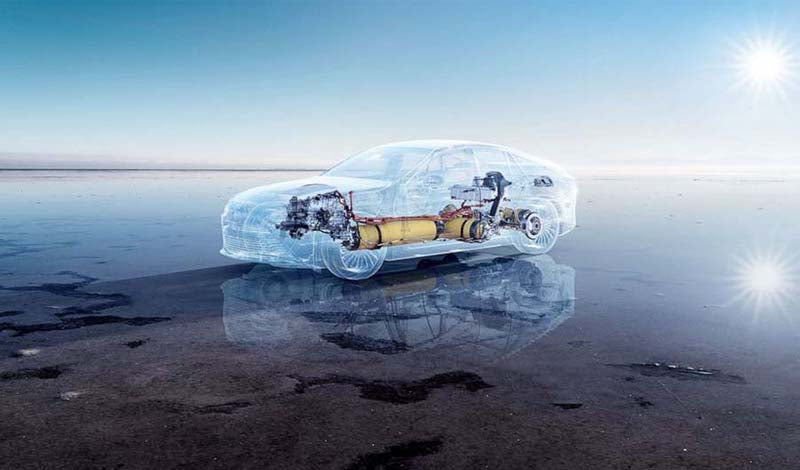
In the 1990s, electric vehicles developed rapidly. Ford and GM in North America, Daimler-Chrysler and Volkswagen in Europe, Honda, Nissan and Toyota in Asia, all major automakers have launched new models and new technologies. Among them, the research and development boom of fuel cell vehicles has opened a new page in the history of electric vehicles. In view of economic, energy, environmental protection and other considerations, the governments of several major automobile countries have also begun to pay attention to fuel cell vehicles, and proposed a series of projects such as PNGV plan, Freedom CAR plan, and JHFC project to promote the development and commercialization of fuel cell vehicles. s project. At the same time, zero-emission regulations, the Kyoto Protocol and a series of related regulations have also objectively promoted the research and development of fuel cell vehicles. The beginning of the new century can be called the first golden age of fuel cell vehicles.
Fuel cells themselves are not new. According to records, as early as 1839, Sir Grove invented the hydrogen-oxygen gas battery. In 1952, Bacon developed and patented the Bacon fuel cell. After that, the fuel cell went out of the laboratory and began to be applied to various fields. Early fuel cells were mainly used in military and scientific research. From the 1960s to the present, various types of fuel cells are in the stage of practical development.
The entry of fuel cells into the automotive field is attributed to Ballard Power Systems, which was the first to successfully develop a proton exchange membrane fuel cell suitable for use as a power source for automobiles. Since then, the fuel cell engine has entered the research and development stage, followed by the emergence of fuel cell vehicles, adding a new member to the electric vehicle family.
Families no longer have to budget for oil consumption, and no longer have to consider the impact of oil prices before people go on vacation or buy any kind of car. "Gas Tiger" cars will be history, gone forever. —Abraham
R & D backing
In order to support the early research and development of fuel cell vehicles, governments have carried out numerous demonstration projects. From 1998 to 2001, companies and government departments such as Ford, Fuel Cell Canada, Natural Resources Canada, British Columbia, the Technology Early Application Evaluation Association, and the Canadian National Fuel Cell Innovation Institute organized Canada's first fuel cell vehicle and hydrogenation system. The demonstration run is called the Vancouver Fuel Cell Vehicle Program (VFCVP).
The demonstration project uses four Ford third-generation fuel cell vehicles. The fuel cell vehicle is 12 meters long and uses NuCellSys' HY80 fuel cell engine, a Dynetek 350bar compressed hydrogen storage tank placed on the roof, and a motor drive system placed at the rear of the car, with a top speed of 128 kilometers per hour. A single full of hydrogen can travel 260 to 320 kilometers. The energy conversion efficiency of the vehicle's fuel cell is 60% at low load and 40% at full load.
NUCELLSYS (THE FUEL CELL SYSTEM COMPANY)
Daimler and Ford Motor Co. each invested 50% to establish NuCellSys, which aims to develop and produce a new generation of fuel cell engines for vehicles. In the early 1990s, Daimler-Benz and Ballard Power Systems reached an agreement on the development and cooperation of fuel cell drives for vehicles. In 1997, the "dbb" Fuel Cell Engine Company was established, and began to conduct comprehensive research on fuel cell engines. Development, not only provides fuel cell engine systems for Dyke and Ford Motor Company, it also supplies fuel cell engines and engineering support to other automakers. In 1998, Ford Motor Company joined the alliance. In 1999, dbb changed its name to "XCELLSIS - Fuel Cell Engine Company". In 2005, Daimler and Ford acquired Ballard Power Systems' business in Europe and established a joint venture "NuCellSys - Fuel Cell Systems Company". Among NuCellSys' products, The HY-80 fuel cell engine is the first and only fuel cell engine in the world that can pass a complete vehicle R&D cycle. It adopts a modular design and can meet the requirements of various vehicle platforms.
At the 2002 Detroit Auto Show, Abraham announced the launch of the Freedom CAR program, a public-private partnership between the U.S. Department of Energy and GM, Ford, Daimler-Chrysler and other automakers to develop hydrogen-powered fuel cell vehicles. R&D. Freedom CAR is a national-level project specially formulated by the US government to promote the development of fuel cell vehicles, a new member of the electric vehicle family, since the 1990 ZEV Act and the 1993 PNGV program.
Freedom CAR Program In 2002, the U.S. Department of Energy, together with the three major automakers, General Motors, Ford, and Daimler-Chrysler, announced that the PNGV program would be updated with the Freedom CAR program to promote the development of hydrogen fuel cell vehicles. CAR in Freedom CAR is the abbreviation of Cooperative Automotive Research in English.
The United States relies heavily on oil imports, and the transportation sector accounts for two-thirds of the total domestic oil consumption in the United States. Huge oil imports will pose a potentially huge threat to the energy security of the United States. The huge "wheel" of the United States is in urgent need of an energy source that can replace oil. The implementation of the Freedom CAR plan is to reduce the future dependence of the United States on imported oil. In addition, if the plan is successful, the gas stations on the street will be replaced by hydrogen filling stations, and Americans will be able to drive clean and environmentally friendly fuel cell vehicles.
To take its destiny into its own hands, the United States must develop new energy sources and new ways of using energy. This is not just a challenge for governments, but a challenge for all of humanity. --U.S. President Obama
To promote the commercial operation of fuel cell vehicles, hydrogen refueling stations are essential. However, it is not easy to build a hydrogen refueling station. First, there are certain technical difficulties, and secondly, the investment is also very huge. In this regard, car manufacturers are more than enough and need strong support from the government. The Japanese government has made great efforts in this regard.
In 2004, the Japanese government launched the JHFC Project, a hydrogen energy and fuel cell project, aimed at accelerating the commercialization of proton exchange membrane fuel cells. This project is mainly based on the Japan Automobile Research Institute to implement the fuel cell vehicle sub-project; the consortium and the Engineering Promotion Association are the main body to implement the fuel cell vehicle hydrogen energy supply equipment sub-project. There are also eight automakers participating, and the fuel cell vehicles developed are leased and sold to the government. The government invests in the establishment of hydrogen refueling stations, so that fuel cell vehicles have the same infrastructure as "gas stations". By 2004, 12 hydrogen refueling stations had been put into use in Japan.
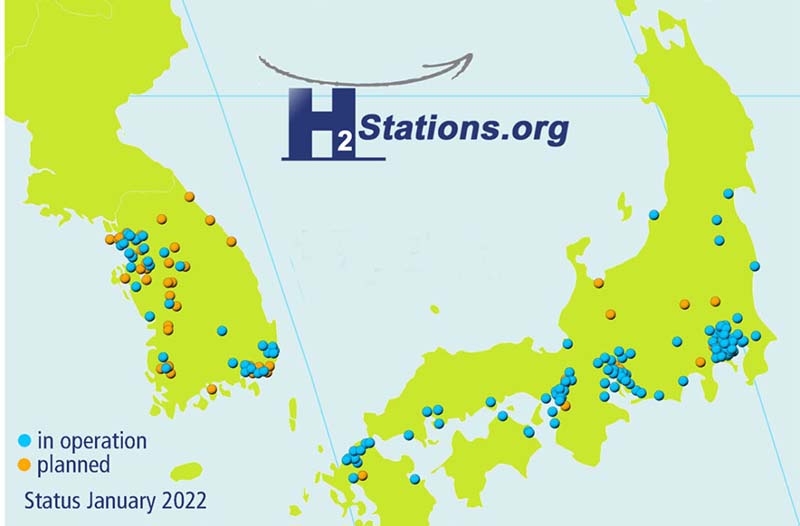
Figure: Schematic diagram of the distribution of hydrogen stations in Japan
Since 2003, the World Bank/Global Environment Foundation has successively carried out demonstration operations of fuel cell buses in China, Egypt, Mexico, India, Brazil and other countries. The selected vehicles are the fuel cell buses produced by DaimlerChrysler.
From 2003 to 2005, 27 DaimlerChrysler fuel cell buses were successively demonstrated in nine major European cities, including Amsterdam, Barcelona, Hamburg, Stuttgart, London, Luxembourg, Madrid, Stockholm and Porto. The EU-financed demonstration project for CUTE cost 18.5 million euros. In the past two years, CUTE has collected information on various aspects of the operation of fuel cell vehicles, obtained various experiences and related materials under different working conditions, and analyzed and compared them.
Since 2004, funded by the US government, nearly 30 companies and relevant government agencies around the world have jointly launched the CaFCP demonstration project. The project, which takes place in California, hopes to demonstrate this new vehicle technology and related infrastructure technologies by operating and testing fuel cell cars and buses under real operating conditions. Cars include DaimlerChrysler's F-Cell, Ford's Focus FCV, GM's HydroGen 3, Honda's FCX, Hyundai's Santa Fe FCEV, Nissan's Xterra FCV, Toyota's FCHV Highlander and Volkswagen Hy-Motion. Fuel cell buses include ZE buses developed by Georgetown University and methanol-based buses and Thor's Thunder Power buses.
R & D climax
At the beginning of the new millennium, the future direction of electric vehicles is still unclear. It is unknown whether batteries or fuel cells are the power source of vehicles. Despite this, the research and development of fuel cell vehicles has set off a turbulent wave in the automotive industry and ushered in the first research and development climax.
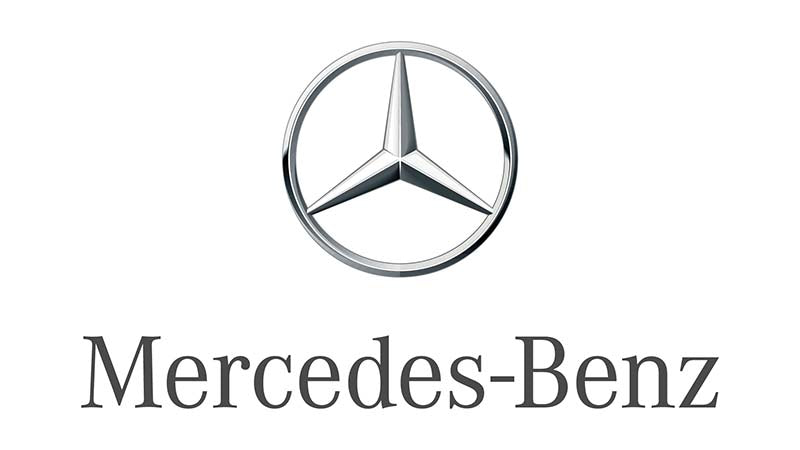
Figure: Mercedes-Benz logo
Daimler-Chrysler Group, the fifth largest automobile company in the world, was established in 1998. The products of Dayick Company cover small-displacement cars, sports cars, luxury cars, light commercial vehicles, heavy-duty trucks and comfortable coaches.
At the end of the 20th century, Daimler launched three generations of fuel cell vehicle models NECARI, NECAR2 and NECAR3. In 1999, Daimler made persistent efforts and launched the pure hydrogen fuel cell vehicle NE-CAR4, which can take 5 people and output power. It is 70 kilowatts, the top speed is 145 kilometers per hour, and the driving range can reach 450 kilometers. On the basis of NECAR3 using methanol on-board hydrogen production technology, Dai-Ke compressed the entire drive system (including methanol reformer) and placed it under the floor, and launched NE-CAR5 in 2000. Its volume is half smaller than that of NECAR3, but the power is increased by 50%, and the energy conversion rate is increased by 25%. The NECAR5 is powered by a fuel cell engine developed by NuCellSys, with an output of 75 kilowatts and a top speed of 150 kilometers per hour. In 2002, NECAR 5 traversed the continental United States, from San Francisco to Washington DC, withstood the test of traffic jams, high temperature, ice and snow, and passed through mountains as high as 3,000 meters, setting a record of 5,250 kilometers.
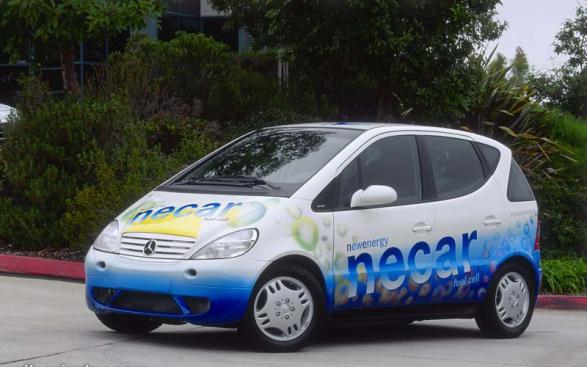
Figure: NECAR4
Ford, the fourth largest car company in the world, owns many famous car brands, such as Ford, Lincoln, Mercury, Mazda, Volvo cars and so on. In addition, it also owns Ford Financial, the world's largest credit company, Hertz, the world's largest car rental company, and Quality Care, a customer service company.
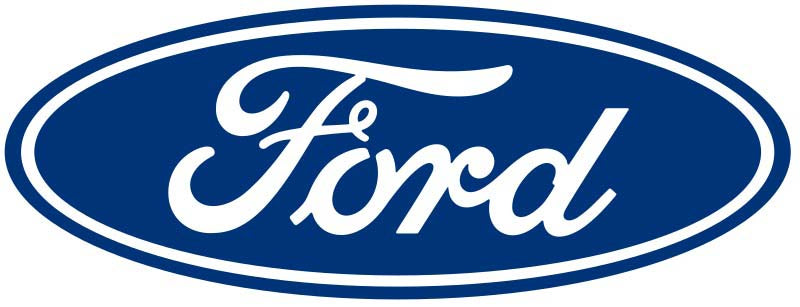
Figure: Ford
In 1999, Ford launched its first fuel cell prototype, the P2000HFC, using Ballard Mark 700 proton exchange membrane fuel cells with an output power of 75 kilowatts and a driving range of 160 kilometers per hydrogen injection. The following year, the Focus FCV was launched. In August 2002, Ford launched the third-generation Focus FCV, which adopted an electric-electric hybrid dual-power system and added a high-performance battery from Japan's Sanyo Electric to make up for the lack of output power from the fuel cell itself. The third-generation Focus FCV using this technology can travel 250-320 kilometers with four adults fully loaded, and the maximum safe speed can reach 130 kilometers per hour.
Honda Motor Company, founded in 1946, is the world's seventh largest automaker and the most profitable automaker. With CR-V, Fit, Civic, Odyssey, Accord and other series models.

Figure: Honda logo
Honda has launched five generations of FCX fuel cell vehicles since 1999. In September 2002, the FCX was certified as a zero-pollution vehicle by the U.S. Environmental Protection Agency (EPA), and was the first fuel cell vehicle in the world to receive this honor. In December 2002, Honda delivered the first batch of FCX government vehicles to the Japanese government and the Los Angeles city government at the same time, becoming the first automobile manufacturer in the world to commercialize fuel cells. Unlike other automakers, Honda develops its own fuel cell stack Honda FC and fuel cell system during the development of fuel cell vehicles. Honda's first V-shaped flow field stack, Honda FC, is greatly reduced in volume and increased in power density by about 16%. This fuel cell system can start without problems at a low temperature of -30°C.
Toyota, established in 1937, is one of the world's top ten automotive industry companies. The brands mainly include the early Toyota, Crown, Corolla, Corolla, and the luxury car Lexus.
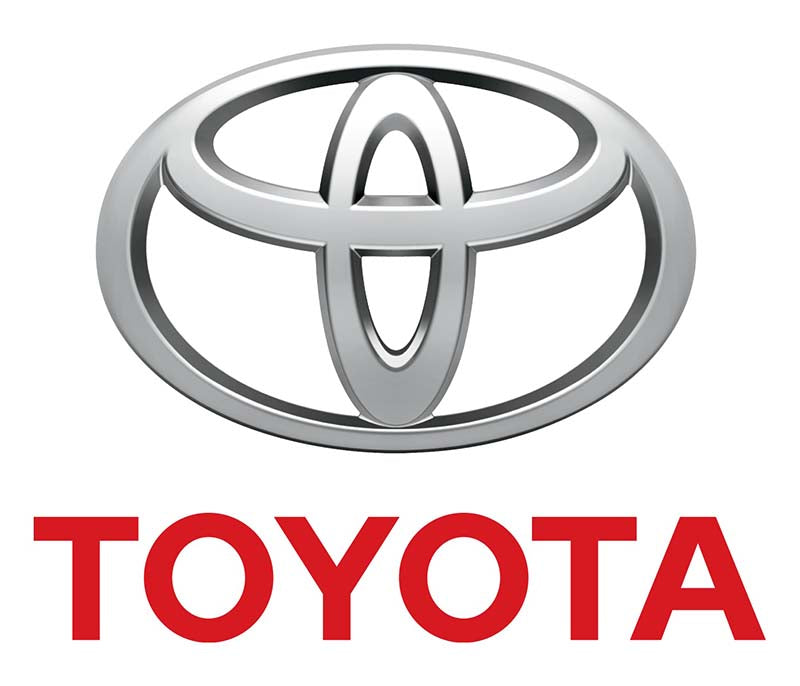
Figure: Toyota logo
In the early 1990s, Toyota began to develop hydrogen fuel cell vehicles. After nearly 10 years of efforts, it also formed its own series of models, FCHV. The fuel cell and battery of the fourth-generation FCHV are connected in parallel, which can switch the power mode according to the running state of the vehicle, achieve optimal control, and increase the energy efficiency by about 3 times, and can provide power equivalent to gasoline vehicles.
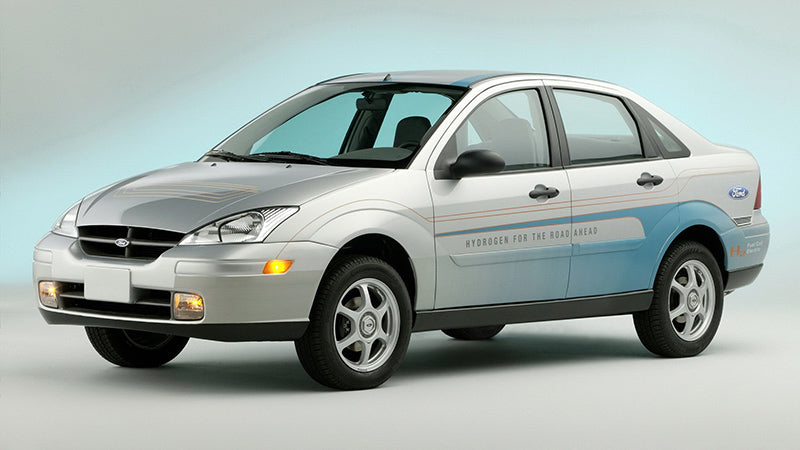
Figure: 3rd Generation Focus FCV
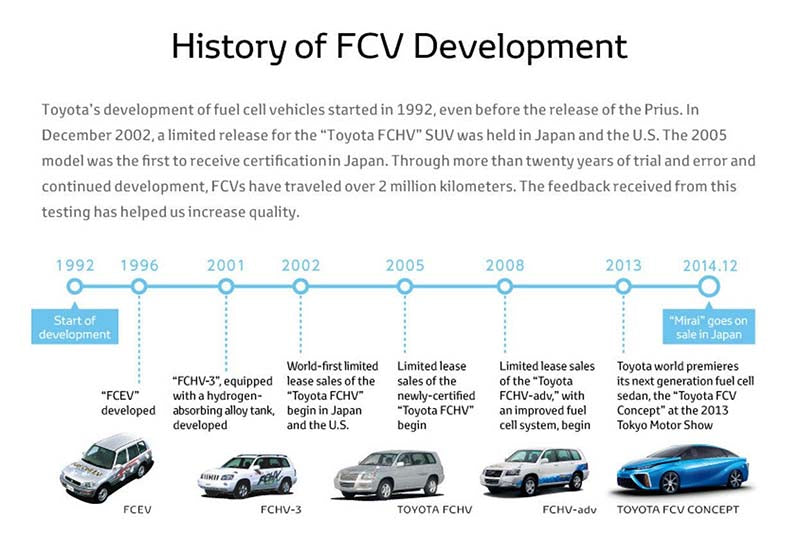
Figure: Toyota's fuel cell vehicle development history
a cool look
In 2004, various car manufacturers seem to have slowed down the pace of research and development of fuel cell vehicles invariably. The first research and development boom of fuel cell vehicles seems to gradually fade away. People are beginning to think calmly about whether fuel cell vehicles can take on the important role of the protagonist of the future automobile market, how to more effectively make it from the R&D stage to the commercialization stage, and whether the current stage is the best time for automakers to invest in R&D. At the beginning of the birth of fuel cell vehicles, people were pleasantly surprised that they had found a powerful tool to overcome pollution, cope with the energy crisis and increase the driving range of electric vehicles. Major auto manufacturers have invested large sums of money in the research and development of fuel cell vehicles. However, the contradiction between high investment and low return has to make people calm down and re-examine fuel cell vehicles. The reasons for this phenomenon can be attributed to the cost and lifetime of hydrogen infrastructure and fuel cells, which are the main challenges for the commercialization of fuel cell vehicles on the streets.
In January 2005, the world's first hydrogen refueling station was built in Washington, the capital of the United States. In 2007, China built its first hydrogen refueling station in Shanghai Anting International Automobile City. The commercial demonstration operation of fuel cell vehicles is gradually carried out. In 2003, the European Union successively put 30 fuel cell buses into commercial demonstration operation in 10 European cities to promote the industrialization of fuel cell vehicles. In 2004, Canada announced the establishment of a "hydrogen highway" linking Vancouver and Weisler, which is expected to open at the 2010 Vancouver Winter Olympics. In California, where hydrogen refueling facilities are installed on major highways, it is also expected to achieve the goal of having a hydrogen refueling station every 20 miles by 2010.
The Chinese Dream of Clean Cars
Speaking of China's fuel cell vehicles, we have to mention Professor Wan Gang, "the father of China's fuel cell vehicles". In 2000, Professor Wan Gang proposed to the State Council of China "to develop clean energy cars and realize the leap-forward development of China's auto industry". At the end of 2000, Wan Gang, who had studied and worked in Germany for many years, returned to China and was appointed by the Ministry of Science and Technology of China as the chief scientist and overall team leader of the National 863 Program Electric Vehicle Major Project. The most arduous fuel cell car project ever. He established the "three verticals and three horizontals" (the three vehicle technologies of fuel cell vehicles, hybrid electric vehicles and pure electric vehicles are "three verticals", and the three key technologies of multi-energy powertrain system, drive motor and power battery are "three verticals"). Three horizontal") China's electric vehicle R & D layout. After several years of hard work, the research and development of fuel cell vehicles in China has made rapid progress.
In 2003, under the leadership of Professor Wan Gang, the fuel cell vehicle R&D team of Tongji University successfully developed China's first fuel cell car, "Chaoyue No. 1", and started demonstration operation. This is a milestone in the history of electric vehicles in China. The car is equipped with a 30-kilowatt proton exchange membrane fuel cell independently developed in China, using high-pressure hydrogen as fuel. By the end of 2004, on the basis of the first-generation models, "Beyond No. 2" and "Beyond No. 3" were successively launched. In 2008, the follow-up model of the Beyond series was unveiled in Beijing as an Olympic car, fulfilling the Chinese dream of a clean car.
In the development and popularization of electric vehicles, China also has many "big moves". At the 2008 Beijing Olympic Games, there were 55 pure electric buses, 25 hybrid electric buses, 75 hybrid electric cars, 20 fuel cell cars, 3 fuel cell city buses and more than 320 pure electric venue vehicles. A total of 500 new energy vehicles will serve the "Green Olympics". During the 2010 Shanghai World Expo, there will be more than 1,000 new energy vehicles for the Expo, of which about 300 vehicles are super capacitor vehicles and pure electric vehicles, and 200 vehicles are fuel cell vehicles. They will serve in the park with zero carbon emissions.
History reappears
After Otto invented the internal combustion engine in 1876, it was initially difficult to choose between the nascent gasoline car and the less successful electric car, the two technologies going hand in hand. When the technology of the internal combustion engine gradually matured and its advantages became more and more obvious, people chose gasoline vehicles, and it has continued to this day. With the development of history to the present, with people's increasing awareness of environmental and energy crisis, gasoline vehicles will gradually fade out of the historical stage in the foreseeable future.
So, how will the dream of human freedom of movement continue? Electric energy has become a natural choice for people, and its popularity and diversification of sources make people turn their attention to electric vehicles. Due to the limited energy density of the power battery of pure electric vehicles, the problem of short driving range has been difficult to solve. The fuel cell vehicle, which is a rising star, is equipped with hydrogen cylinders, which can solve the problem of pure electric vehicle driving range to a certain extent. . In the era when people have not found a solution to the short driving range of pure electric vehicles due to low energy density, fuel cell vehicles have obtained this valuable development opportunity. However, fuel cell vehicles started late, and their technological maturity is far less than that of pure electric vehicles.
In addition, processes such as electrolysis of hydrogen production and hydrogen pressurization require the consumption of electric energy, which will inevitably lead to a lower utilization rate of electric energy than pure electric vehicles. Compared with pure electric vehicles, the additional cost of electrolysis and pressurization also makes fuel cell vehicles have no price advantage at all. It is conceivable that once better battery electrode materials are found to solve the problem of the driving range of pure electric vehicles, then fuel cell vehicles are likely to fade out of the stage of history like electric vehicles a hundred years ago. At present, the research and development of the two are still in a state of parity, and it will take time to decide who will become the mainstream of electric vehicles in the future. In this battle between Chu and Han, which is related to the future development of automobiles, it is still unknown whether pure electric vehicles are slightly better or whether fuel cell vehicles are superior in technology. But what is certain is that with the development of energy, environment and science and technology, mankind will continue to pursue the dream of free movement. The choice of fuel cell vehicles or pure electric vehicles is just a difference in the way of realizing the dream.